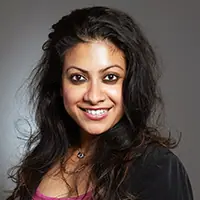
Banks Are Missing Out on America’s Most Financially Active Demographic
Brought to you by Tavant

Despite continuous setbacks, women are more economically powerful in America than ever before. This is a prime opportunity for banks to capitalize on women’s unique banking demands, both as customers and in terms of employment.
Women were disproportionately impacted by the coronavirus pandemic, causing a further growth in gender financial disparities. Unemployment among women increased compared to men, according to a study by the UN Capital Development Fund; additionally, millions of women left the workforce to prioritize caregiving responsibilities.
The pandemic comes in the midst of what is expected to be the greatest wealth transfer in history that is expected to occur in the next decade. More than $30 trillion of wealth could be passed from baby boomers to their children and heirs. Women’s share of private wealth is expected to grow dramatically.
Additionally, women own and operate two-fifths of small to mid-sized businesses – yet 70% of them still have unserved or underserved credit needs, according to a recent IDB Group study. And more than two-thirds of female entrepreneurs are opening businesses because they see clear business opportunities, not just out of necessity.
The economic tables are turning. Women are now the primary breadwinners in the United States and now earn the lion’s share of household income overall compared to any other banking demographic. Nearly two-thirds of mothers last year were either breadwinners or for their families. More that 40% of women are working mothers whose income makes up at least half of their family’s total income.
For women in America, one size does not fit all. Financial inclusion – which extends far beyond a bank account – leads to economic empowerment. But “bank accounts can be powerful tools in the hands of women who are determined to take more control over their lives,” says Greta Bull, former CEO of the Consultative Group to Assist the Poor. So, let’s start there.
How Banks Can Capitalize
How well do the current banking conditions look, given that women control of more dollars than ever before? According to casinoohnepause.de, as the new default users of financial products and services, women are making spending decisions – lots of them.
It’s not enough for banks to use targeted marketing that features bright-colored content and fancy font types. Those and other stereotypically feminine marketing strategies are never going to work, especially when it comes to banking.
The problem isn’t that women aren’t being exposed to attempts from banks to acquire new customers. From my personal experience navigating the banking industry as a female customer, I can say it’s actually very much the opposite. I am constantly bombarded by the same cookie-cutter attempts to draw my attention to the same untailored banking products or services over and over again.
The problem is that banks aren’t offering anything that meets the needs and preferences of the female demographic. They need to systematically rethink their banking practices and how they address the users of their banking services.
It’s estimated that more than 3 million women are seeking restart opportunities. Several consultancies focused on restarts – such as Apru00e8s, iRelaunch, and reacHIRE – have launched in the last few years. These companies, and others, help financial institutions and other organizations develop restart channels within their inclusion programs and help identify candidates. Banks are also launching financial products and services tailored to the specific needs of women entrepreneurs, as they increase the quality of their portfolio while having a social impact.
“What [these banks] offer ranges from women-targeted loans for working capital and investments to credit cards, housing loans, programmed savings, checking accounts and insurance products. This offering is further complemented by non-financial services including networking events for women entrepreneurs and training programs,” the IDB Invest wrote in a piece about how banks can attract more female customers. “Given women’s comparatively better savings behavior, demonstrated loyalty to banks and lower credit risk, many banks aspire to be the financial institution of choice for women in the region.”
These banks are on the right track. Women won’t enjoy doing business with any financial institution that considers men their default user. It is time to change the dynamic between women and banks. It is urgent that banks act on this as soon as possible if they desire the greatest return from investing in diversity and inclusion programs. They need to embed actionable plans that create more financial inclusion for women as part of their long-term business strategies.
A ‘Call to Action’ mindset will drive diversity within firms to showcase more tech innovations and increase productivity. The more that women work, the more economies grow. Simply put, women’s economic equality is not only right – it’s good for business.


